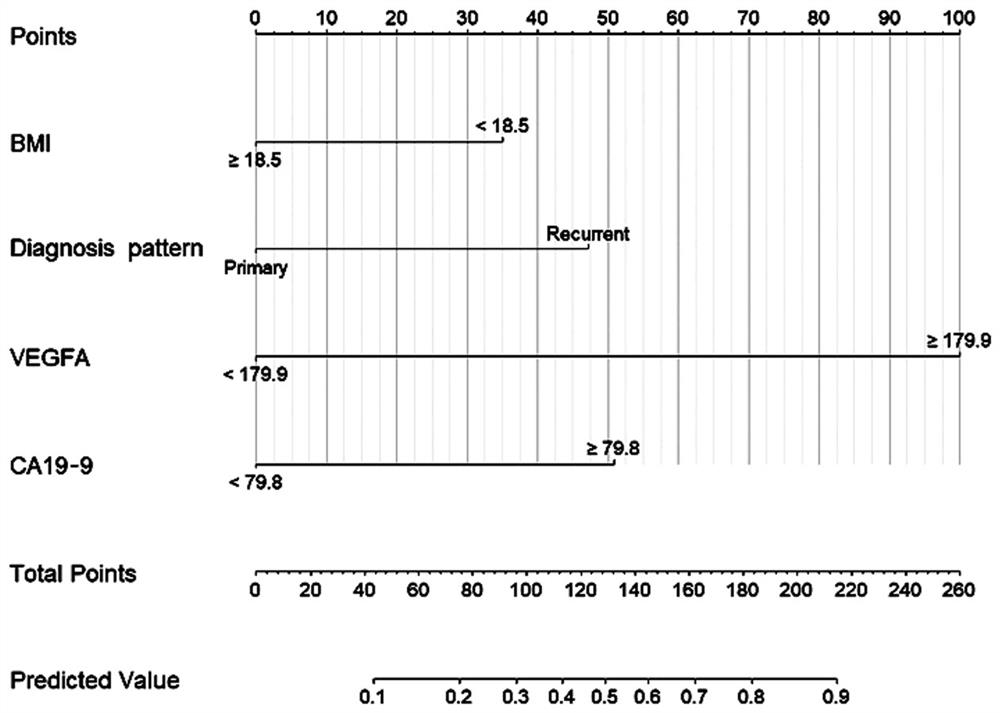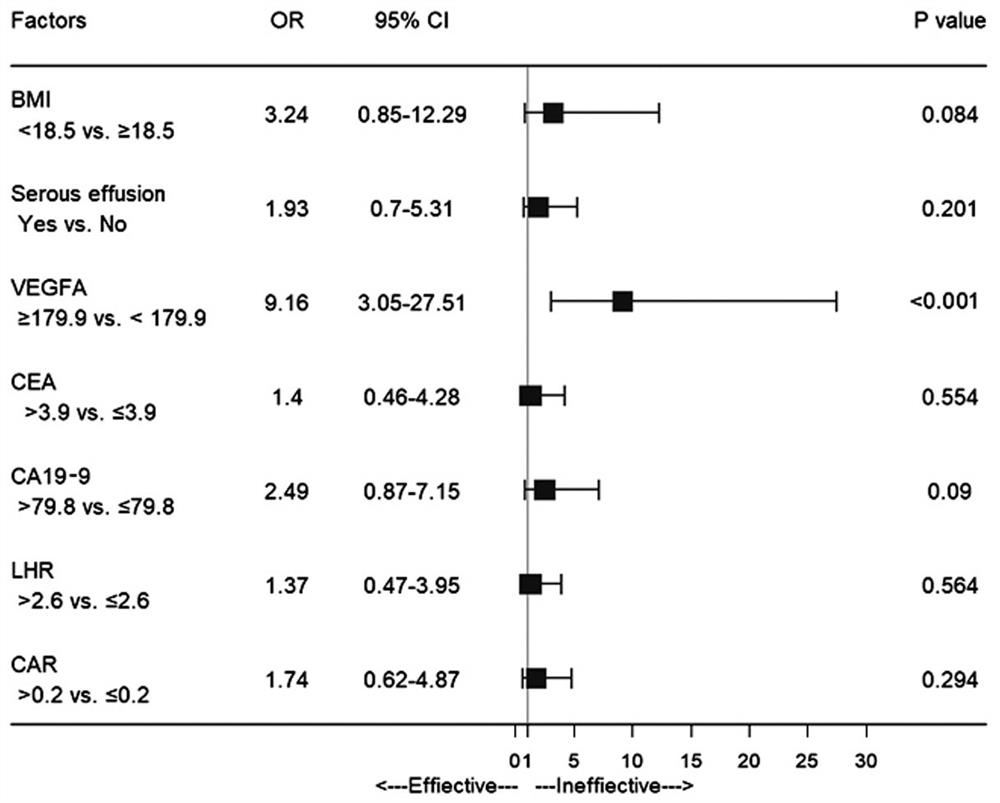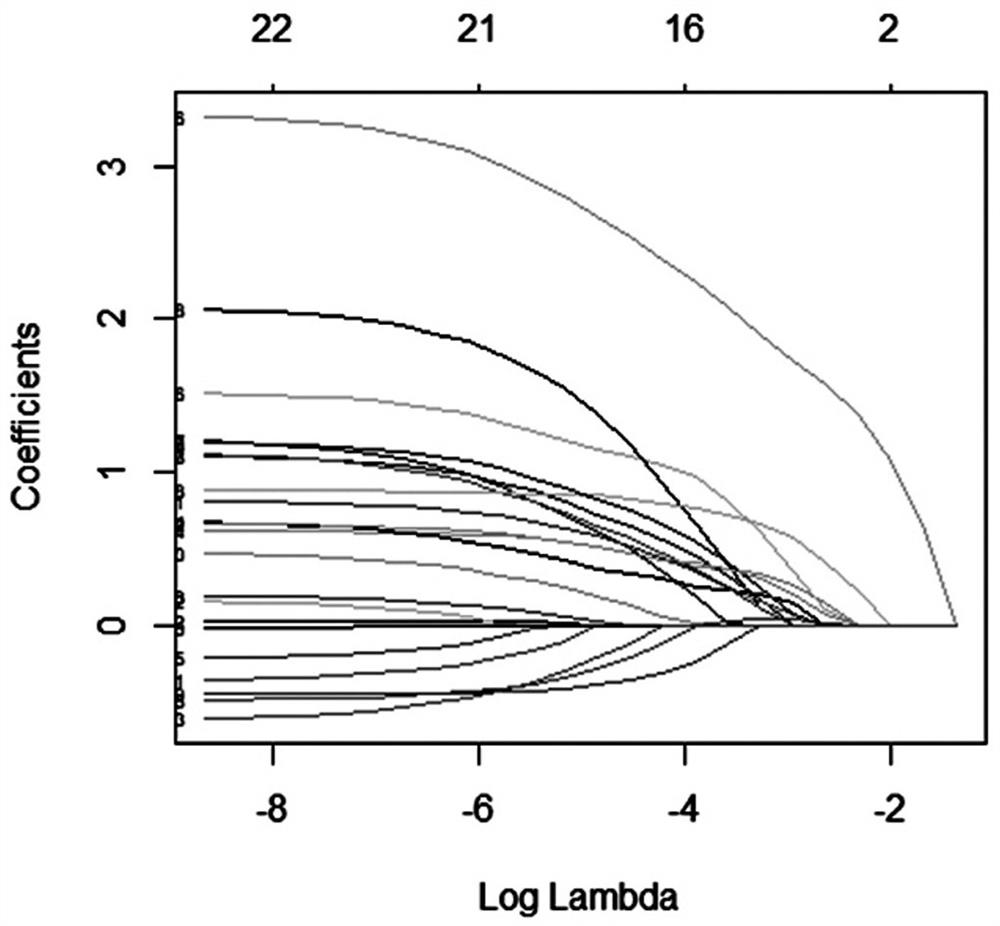HER2 negative advanced gastric cancer patient first-line chemotherapy effect prediction model based on VEGFA (vascular endothelial growth factor A) and application thereof
A technology for advanced gastric cancer and predictive models, applied in the field of clinical medicine, can solve problems such as difficulty in popularization, and achieve the effect of guiding clinical judgment and stratification
- Summary
- Abstract
- Description
- Claims
- Application Information
AI Technical Summary
Problems solved by technology
Method used
Image
Examples
Embodiment 1
[0033] In the present invention, the method for constructing a VEGFA-based first-line chemotherapy curative effect and prognosis model for predicting HER2-negative advanced gastric cancer patients comprises the following steps:
[0034] (1) Screening of the modeling population: A total of 111 untreated patients with postoperative recurrent or metastatic HER2-negative advanced gastric cancer who were treated in the First Affiliated Hospital of Bengbu Medical College from November 2017 to September 2021 were enrolled. The inclusion criteria are as follows: histologically confirmed HER2-negative patients; patients who have not received anti-tumor therapy for recurrent or metastatic gastric cancer; patients who are not suitable or unwilling to receive surgery or radiotherapy; patients with target lesions that can be evaluated for efficacy. The exclusion criteria were as follows: combined with other tumors or subtypes; patients with severe heart, liver, and kidney diseases; patients...
Embodiment 2
[0053] Figure 5 ROC curve of Figure 6 The calibration curves were used to verify the discrimination and calibration of the curative effect prediction model in the examples.
[0054] Based on the patient population data included in Example 1, the model in Example 1 was evaluated. The discrimination of the model is determined by the ROC curve ( Figure 5 ), the ordinate is the true positive rate (TPR), which is the number of patients who are really ineffective and the model also judges that the treatment is ineffective divided by the number of patients who are really ineffective. The abscissa is the false positive rate (False positive rate, FPR), which is the number of patients whose treatment is effective but the model predicts that the treatment is ineffective divided by the number of patients who are actually effective. The true positive rate of TPR is the detection rate of people who are ineffective in treatment, how many people are detected in the ineffective people; a...
PUM
 Login to View More
Login to View More Abstract
Description
Claims
Application Information
 Login to View More
Login to View More - R&D
- Intellectual Property
- Life Sciences
- Materials
- Tech Scout
- Unparalleled Data Quality
- Higher Quality Content
- 60% Fewer Hallucinations
Browse by: Latest US Patents, China's latest patents, Technical Efficacy Thesaurus, Application Domain, Technology Topic, Popular Technical Reports.
© 2025 PatSnap. All rights reserved.Legal|Privacy policy|Modern Slavery Act Transparency Statement|Sitemap|About US| Contact US: help@patsnap.com



